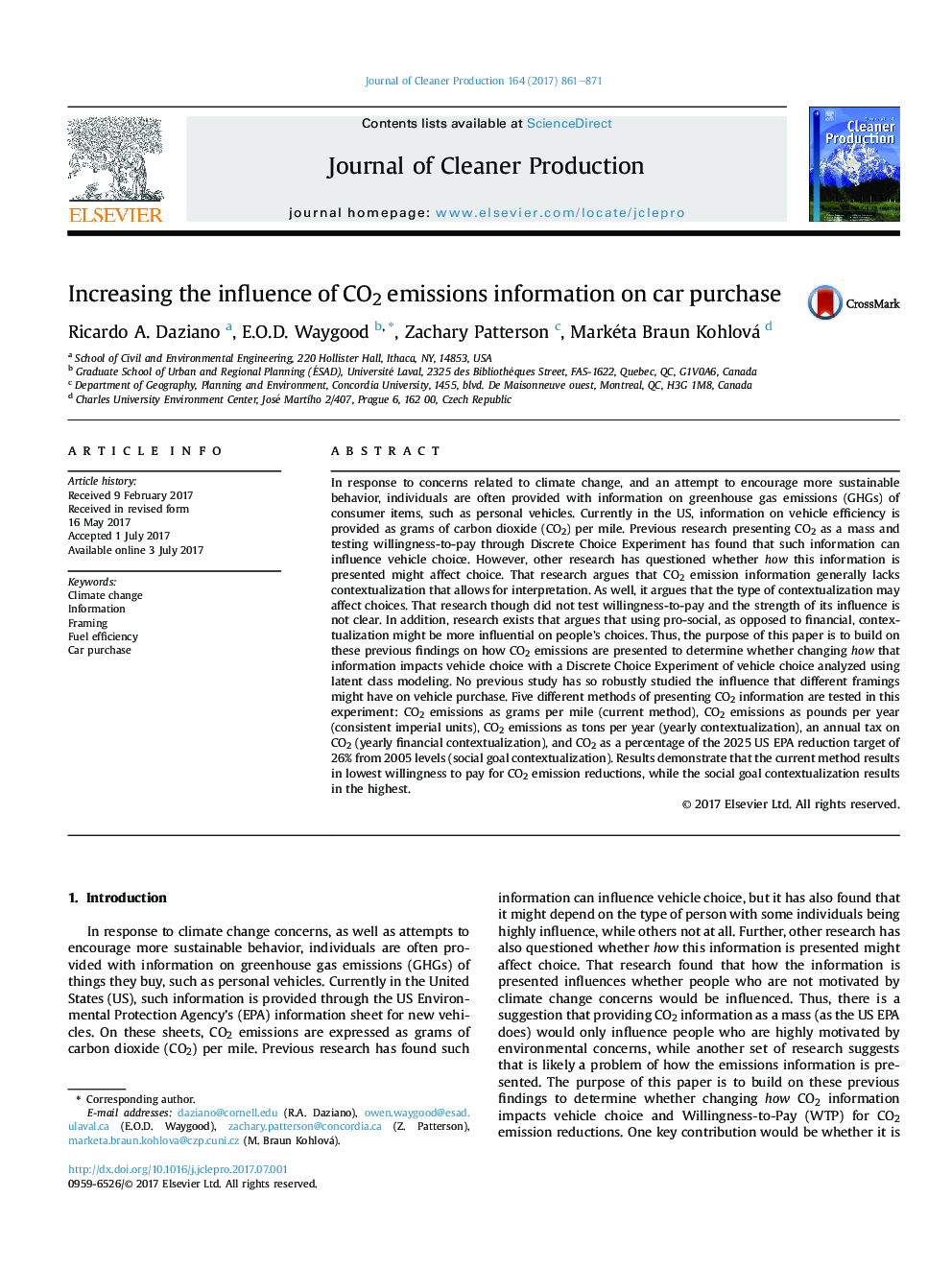| کد مقاله | کد نشریه | سال انتشار | مقاله انگلیسی | نسخه تمام متن |
|---|---|---|---|---|
| 5480496 | 1522090 | 2017 | 11 صفحه PDF | دانلود رایگان |
عنوان انگلیسی مقاله ISI
Increasing the influence of CO2 emissions information on car purchase
دانلود مقاله + سفارش ترجمه
دانلود مقاله ISI انگلیسی
رایگان برای ایرانیان
کلمات کلیدی
موضوعات مرتبط
مهندسی و علوم پایه
مهندسی انرژی
انرژی های تجدید پذیر، توسعه پایدار و محیط زیست
پیش نمایش صفحه اول مقاله

چکیده انگلیسی
In response to concerns related to climate change, and an attempt to encourage more sustainable behavior, individuals are often provided with information on greenhouse gas emissions (GHGs) of consumer items, such as personal vehicles. Currently in the US, information on vehicle efficiency is provided as grams of carbon dioxide (CO2) per mile. Previous research presenting CO2 as a mass and testing willingness-to-pay through Discrete Choice Experiment has found that such information can influence vehicle choice. However, other research has questioned whether how this information is presented might affect choice. That research argues that CO2 emission information generally lacks contextualization that allows for interpretation. As well, it argues that the type of contextualization may affect choices. That research though did not test willingness-to-pay and the strength of its influence is not clear. In addition, research exists that argues that using pro-social, as opposed to financial, contextualization might be more influential on people's choices. Thus, the purpose of this paper is to build on these previous findings on how CO2 emissions are presented to determine whether changing how that information impacts vehicle choice with a Discrete Choice Experiment of vehicle choice analyzed using latent class modeling. No previous study has so robustly studied the influence that different framings might have on vehicle purchase. Five different methods of presenting CO2 information are tested in this experiment: CO2 emissions as grams per mile (current method), CO2 emissions as pounds per year (consistent imperial units), CO2 emissions as tons per year (yearly contextualization), an annual tax on CO2 (yearly financial contextualization), and CO2 as a percentage of the 2025 US EPA reduction target of 26% from 2005 levels (social goal contextualization). Results demonstrate that the current method results in lowest willingness to pay for CO2 emission reductions, while the social goal contextualization results in the highest.
ناشر
Database: Elsevier - ScienceDirect (ساینس دایرکت)
Journal: Journal of Cleaner Production - Volume 164, 15 October 2017, Pages 861-871
Journal: Journal of Cleaner Production - Volume 164, 15 October 2017, Pages 861-871
نویسندگان
Ricardo A. Daziano, E.O.D. Waygood, Zachary Patterson, Markéta Braun Kohlová,